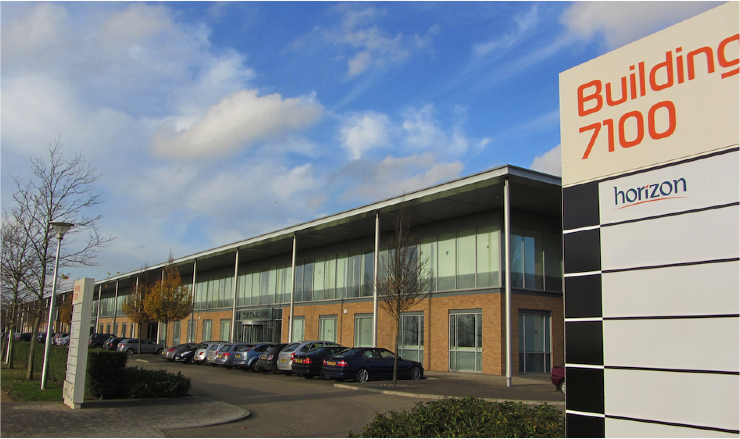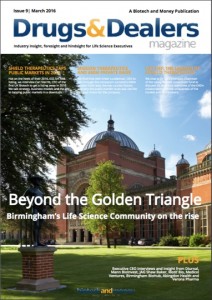Horizon Discovery: 1 year on from IPO
Quality sites
- Online Casinos UK
- Casino Non Aams
- Casinos Not On Gamstop
- UK Casinos Not On Gamstop
- Best UK Casinos Not On Gamstop
- Casino Sites Not On Gamstop
- Casino Sites Not On Gamstop
- Casino Sites Not On Gamstop
- Non Gamstop Casino Sites UK
- Non Gamstop Casinos
- Best Online Casino Canada
- Casino Sites Not On Gamstop
- Non Gamstop Casino UK
- UK Online Casinos Not On Gamstop
- Best Slot Sites 2025
- Casinos Not On Gamstop
- Meilleur Casino En Ligne
- Non Gamstop Casinos
- Slots Not On Gamstop
- Non Gamstop Casino
- New Online Casinos Not Registered With Gamstop
- Casino Non Aams Sicuri
- Casino Sites UK Not On Gamstop
- Casino Non Aams Italia
- Bitcoin Casino
- Meilleur Site Casino En Ligne Belgique
- Casino App
- Migliori Siti Scommesse Non Aams
- Meilleur Casino En Ligne De France
- Nouveau Jeu Casino En Ligne
In March 2014, Horizon Discovery, a leading life science company supplying research tools to organisations engaged in genomics research and the development of personalised medicines successfully completed a £68m listing on AIM.
In this interview we spend time with CEO Dr Darrin Disley to understand the advances made across its range of technologies and in its strategic positioning during its first 12 months as a publicly listed company.
B&M: It’s fair to say that the last 12 months for Horizon and yourself have been extremely positive so what I want to do is review the progress you’ve made since the IPO in March last year.
DD: 2014 was transformational year for the business as completing a very successful IPO enabled us to consider rapid scale-up both in terms of investment in organic revenue growth and by acquiring additional technology, IP, capability and revenue via acquisition.
The first of the acquisitions was CombinatoRx in June 2014. I had been aware of them for a long time and they were doing drug combination screening before large scale cancer genetics studies became possible post completion of the human genome project. The addition of their combination HTS and Chalice informatics platforms I saw as an essential part of the implementation of personalised medicine as it enables the identification of secondary genetic contexts for existing drugs or combinations of therapies that may target a specific genetic driver synergistically.
It has been an excellent acquisition actually although one of my regrets however, was the timing. We completed and announced the acquisition before the first post IPO initiation research note came out. So it was almost lumped in at the start. Whereas the differential effect it would have presented to investors would have been impactful. We bought it for effectively 1X revenue. And we’ve gained significantly more value reflected in our share price than that.
The next acquisition was Sage labs the founders of whom we had been talking to for a long period of time and they were a natural fit for us because we didn’t have any expertise or infrastructure that would enable in vivo gene editing and we were not going to build it from the ground up. The management team were a very experienced, ambitious and backed by US private equity they had bought the division out of Sigma Aldrich, and they would have started competing with us eventually in the in vitro gene editing space as well. So it made a lot of sense to bring those organisations together to create a powerhouse gene editing outfit capable of leading the industry.
The other acquisition was Haplogen Genomics which I believe is potentially the most transformational to the group, Whilst we historically had a large number of collaborative relationships with academic researchers, Horizon had less than 600 relevant products to sell to the 100,000 or so labs that make up the basic research community.
The Haplogen Genomics platform represents a novel way to generate precisely engineered human cell lines at large scale (10X vs historical rate) and at a price (10% vs historical cost) that places genome editing within the reach of the broader academic research market through an inventory of over 12,000 genetically modified haploid cells. Whats more, there is a route to go to 100,000 and start creating the equivalent of the antibody libraries for every gene in the genome.
This really opened up the academic market as it is now an e-commerce play; $990 whether you pick it from the shelf or whether you want it made. You don’t even have to talk to us – you can purchase in 3 steps on the Internet, it’s literally like back ordering. But the quid pro quo is the product goes back into our inventory so we can disseminate to other researchers.
So that’s what you’ll see a lot from Horizon over the next period is now driving that products piece of the business. That’s what they were focussing on as a key future value driver of the business. The services business unit is well set as we’ve now got scale, good revenue growth rate and good gross margins. But it’s the product business unit with over 50% growth rates forecast by analysts for years to come you should watch out for.
So they were the 3 acquisitions. The bottom line is we went from a £45m market cap company at close of business on 31st March to £175m market cap now. We are nearly exclusively export driven, with over 90% of our c£11.8 million FY14 revenue (£6.6 million FY13; 77% growth) from non UK customers. Customer numbers tripled to c1,000, and we’ve got an international footprint now with c18,000 sq. ft.in the UK (soon to be 30,000 sq. ft.), 8,000 sq. ft.in Vienna and 60,000 sq. ft. in the US.
B&M: What do you think are the principle challenges now for Horizon?
DD: The major challenges before us are integration of the current business units to deliver the One Horizon vision and the development of the operational systems that will enable us to scale into a global life sciences company. We are growing incredibly fast and trying to build at the same time as grow and addressing all these parallel markets is a big challenge.
Another big challenge is market penetration. Historically our sales have been peer to peer type sales with only our niche cell line anddiagnostic reagent business being transactional. Thus revenue has been visible but with long lead times for new service sales (which have predominated) less predictable. We would like to become a little more like that great company Abcam where revenue is less visible but because of the long history of transactional product sales you know it’s coming.
So we have begun building an ERP system and an e-commerce platform and have recently hired Dr Juergen Harter (VP Information Systems) and Elaine O-Brien (e-commerce Director). Both have extensive experience including recently at AbCam a company we look up to. Elaine is leading the build of an e-commerce platform that will house all of these 14,000 products by the second half of the year with the diagnostic products going live in Q2 on that system. This is an education for us as the new Products Business Unit is focussed on volume, sales channels, driving down COGS so products increasingly of <$1,000 sticker price can be made significantly profitable. This is very different to when we used to sell cell lines for $10,000 to $20,000 with annual renewals so you could afford to send them in big fancy boxes of dry ice with gorgeous stickers and plastic cases that cost $3 each. Not now, that’s a chunk of your profit.
B&M: How important are the partnerships you’ve developed with pharma companies in the medium to long term goals?
DD: I think they continue to be very important and drive revenue leveraged milestone and royalty upside and also is where we continue to develop an outstanding scientific reputation in the industry.
But increasingly the organic growth rates achievable with services will not be as high although you can drive margin via enhanced content and you can have transformational deals that will add large revenue streams that are a little lumpy. So what you hope to do is build a nice condition service/revenue thing that’s growing at 25 or 30%, with the occasional big deal, the alliance you can add on top of that.
B&M: There are obviously other players in personalised medicine, How would you say you differentiate yourself? What are the real USPs for Horizon?
DD: I think from a genome editing perspective we have by far the most powerful and flexible platform (combining rAAV, ZFN and CRISPR), know how and experience as well as the strongest IP position. There’s a lot of hype about genome editing, but it’s very simple: you want to be able to perform the type of precision genome editing experiment you need, in the time you need it, at the cost you can afford and to ultimately answer your biological question - and there is no genome editing platform that can bedeployed to answer the wide variety of questions that researchers need answered than ours.
If you need absolute precision without error, our propriety platform RAAV is the only way to go. It’s the reason it’s the only one that is as a human gene therapy and there are >120 clinical trials on going. If time and cost are more important then we can deploy rAAV alongside ZFN or CRISPR to get a suitable answer within the constraints presented.
We have an extensive pedigree and network in translational medicine and this expertise underpins the commercial offerings and support we offer customers. Our leadership was exemplified in 2008 and ’09, when EGFR targeted therapies were in clinical trials for treatment of colorectal cancer.
Horizon founder Professor Alberto Bardelli and Horizonscientific advisory board member Professor Sabine Tejpar wrote papers showing that 40 percent of patients [who] had the concurrent KRAS mutation would likely not respond to these therapies. Thepapers were initially ignored by Pharma. Pharmas had to do new clinical trials in Europe, which resulted in label changes of these drugs, first by the EMEA in 2009, and then by the FDA in 2010. Initially, pharma was not happy with this retrospective finding. As it turned out, they made more money in the first year of KRAS testing than previously and the healthcare system saved $740 million, according to estimates from the American Society of Clinical Oncology. Reimbursement came with higher prices and pharma made more money. The economics proved that smaller populations can generate greater revenue. The key, though, is prospective versus retrospective findings. With prospective findings, one can file patents earlier. If you find novel programs, clearly defined patient populations, you can file chemistry patents much earlier. This has been seen with many new drugs now like Pfizers Crizotinib targeting <5% patients with EM4-ALK fusion in non-small cell lung cancer and the tools and services Horizon offer are having a real impact in the development of these more targeted cancer medicines.
This pedigree helps elsewhere we’re lobbying regulators on the need for genomic reference standards for the companion diagnostic that is required to match patients with the drug that comes out of the end, we’re listened to. Many of the proficiency testing schemes in the world are using our materials to informally regulate the labs to perform a given test to a certain standard. I can’t tell you forward looking stuff but we believe this aspect of our business will do very nicely. Because every genomesequencing test is going to need to be controlled. Both at the research end and then at the diagnostic end. So that’s why we do that.
B&M: What do the next 12-18 months look like? We’ve been hearing about ‘One Horizon’,can you explain more about this?
DD: One Horizon is about creating a fully integrated company, and not having a group of companies that are operating in silos. We’ve reorganised the group from what were effectively 5 businesses operating at 5 locations around the world. We now just have 2 Businesses. There is a Products Business under its President Dr Paul Morrill (based in Cambridge, UK) and a Services Business under its president Dr Edward Weinstein (based in St Louis, USA), and they’re fully integrated business units.
Accountable to the Executive Team and the Board.We’ve restructured the business fundamentally for a number of reasons. One it’s the most efficient way to do it I think; and two it breaks down that sort of silo’d mentality from the acquired and historical business units and you will soon see a roll out of a unified brand. We’re going to move away from precision gene editing as a strap-line as that’s pretty narrowly focused commercially. Horizon will have very clear market brands for genomics, diagnostics, bio production and discovery for the services side of things. But internally they’re not identifiers, they’re external customer identifiers. Internally it’s just products and services. So that’s what we mean about creating the One Horizon culture.
Another part of that culture is transitioning the business into one that exhibits a profitable mind-set top to toe. We have a blend of offerings that are profitable already, and others that are investment mode. Making clear to everyone to see that each pound is invested rather than spent and that each pound of profit is one less pound we need to raise in equity dilutive funding is paramount.
We’ve now got a good of capability within the company but with just under £12 million of revenue, £20 million roughly forecast this year (by the analysts) we operate a number of interconnected but shallow P&Ls. So what we don’t want to do is add more breadth with any M&A focus being placed on creating solidity, depth to that P&L.
It’s a blend of driving organically those high growth areas like the products part of the business, delivering maximum scale and margin into the services by linking of capabilities built this year and then driving scale and profit into the P&L. We don’t want to change the profitability trajectory, 2017 for a sustainable project.
B&M: If you can look at one thing over this next 12-18 months that you’re looking forward to realising?
DD: For me I think this next year really is a key year. If we’relooking to pick faults in what we’ve done, you’d say they’ve put a lot of pieces together that have real promise and should deliver more than the sum of their parts, but very few people actually integrate companies very well. I’d like if in 12 months people say this is one integrated company, a sustainable company, a great company.
Horizon’s interview was one of 3 interviews focused on IPOs in March’s Drugs & Dealers Magazine. Read interviews with Steve Harris, CEO of Circassia and Dr Jim Phillips, CEO of Midatech Pharma, plus much more.





Leave a comment